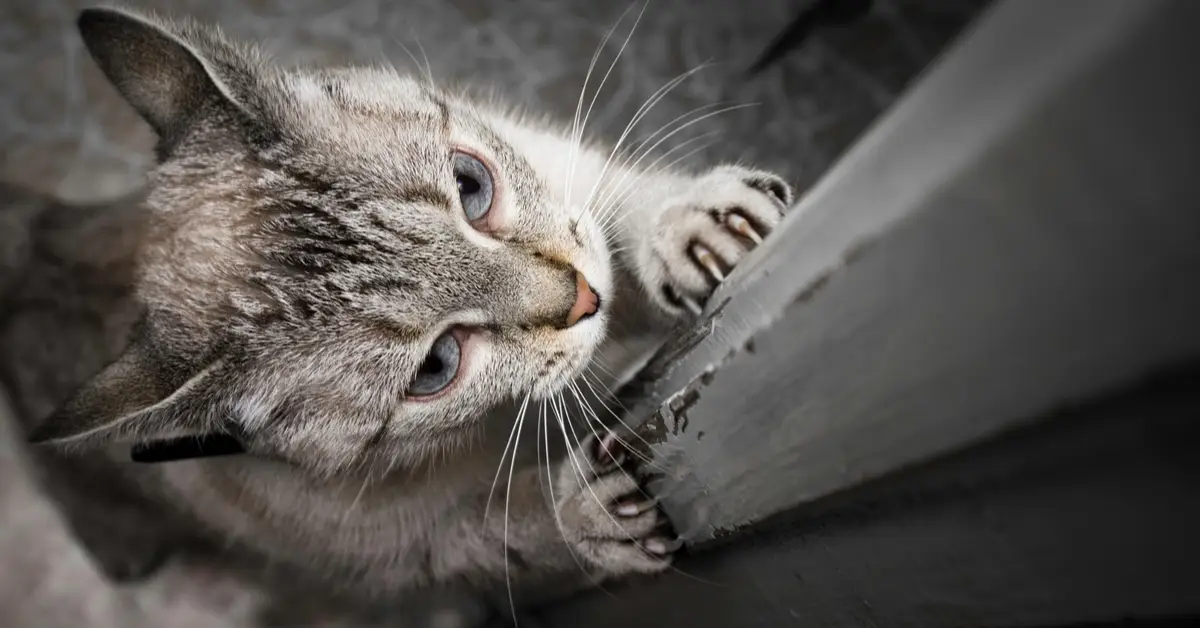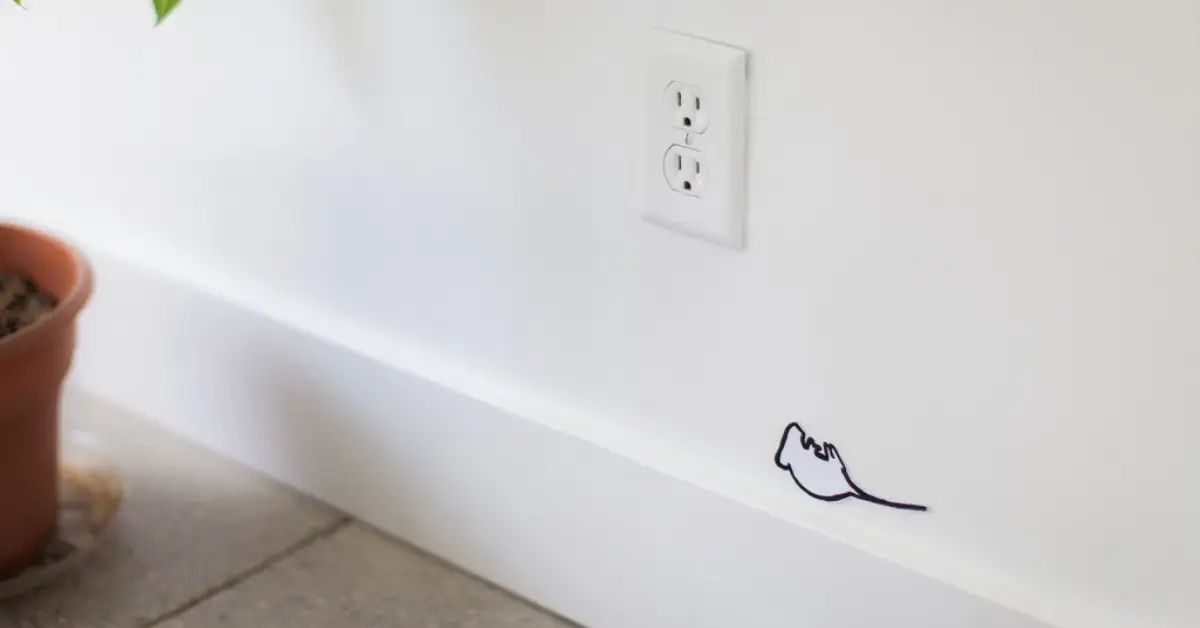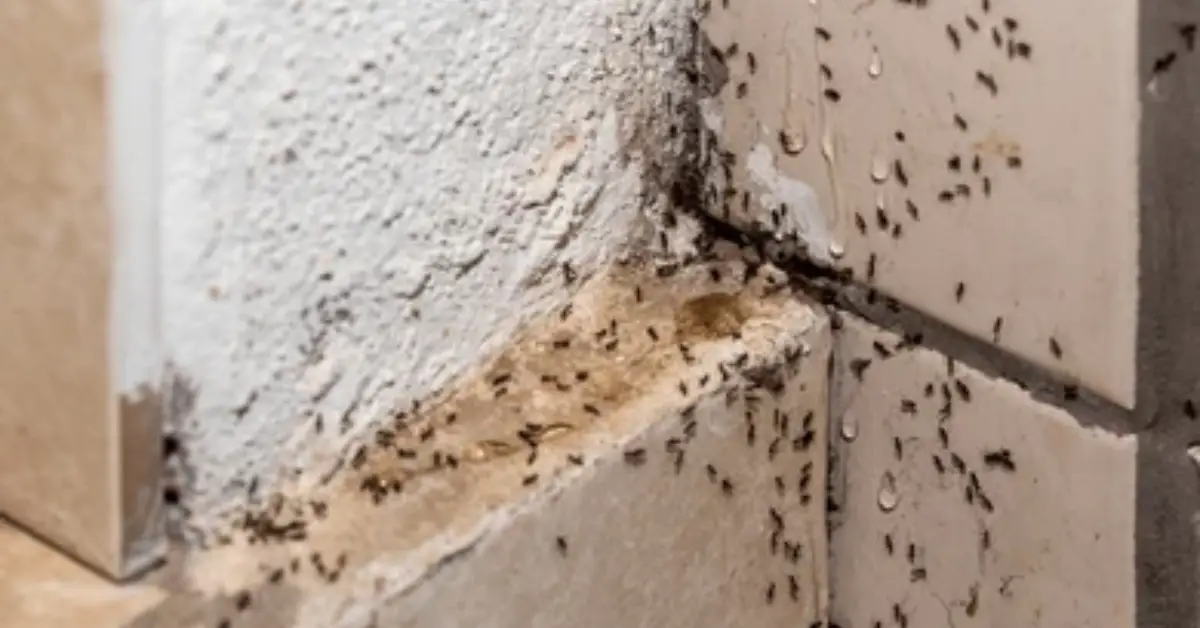10 Warning Signs You Have Something Dead Inside Your Wall
When you’ve lived in a home long enough, you learn the difference between a “normal house smell” and something that hits you the moment you walk past a wall and think… this isn’t right. I’ve been in that exact moment before, and if you’re here, you probably have too. Maybe it’s a sharp, sour odor that rolls in when the heat kicks on. Maybe your pet keeps sniffing one corner like it’s hiding a secret. Or maybe the house has gone strangely quiet after days of scratching inside the walls.
Whatever pushed you to search this today, you’re not imagining things — and you’re not overreacting. When something dies behind a wall, the signs start small, then escalate fast. Most people wait too long because they hope the smell will go away on its own. It doesn’t. And the longer you ignore it, the harder and more expensive the cleanup becomes.
I want to walk you through this the way I would if we were standing in your hallway right now, tracing the scent together. We’ll look at the real signs, how to confirm what’s going on, and what to do next without tearing half your house apart.
Before we dive in, I’m curious — what was the very first thing that made you think something might be dead in your wall?
Why You Suspect Something Died in Your Wall (and What You’re Actually Looking For)
When you reach the point where you’re asking yourself if something died behind a wall, it’s not coming from imagination — it’s coming from experience. There’s always a trigger. A smell that wasn’t there yesterday. A quiet corner of the house that suddenly feels different. A pet that won’t stop sniffing one spot. I’ve walked homeowners through this so many times, and the pattern is almost identical: a small hint turns into a nagging thought, and that thought turns into a real concern you can’t ignore.
Before you jump into solutions, it helps to understand what actually happens behind the drywall and why walls become such common hiding places for animals in the first place.
Hidden Animals vs. What Happens After They Die
Most people expect loud scratching or constant noise when an animal is inside a wall. But when an animal dies, the first real sign is the silence — followed by a smell that slowly sharpens over a few days.
If something has died in your wall, you’ll usually notice a combination of:
- A smell that keeps getting stronger in one specific area
- Insects gathering near outlets, vents, or baseboards
- Pets focusing intensely on one spot
- Air that feels heavier or more “stale” near that section of the wall
These aren’t random clues. They happen because once an animal dies, decomposition begins instantly, and the gases, fluids, and bacteria move into the surrounding space.
If you want a reliable breakdown of how dead animals behave inside walls, Orkin has explained the basics in a straightforward way. I’ve pointed many concerned homeowners to their guide.
Why Walls Become Perfect Hiding Spots

Animals don’t end up inside walls by accident. Walls offer warmth, insulation, and protection — basically the perfect hideout. Once they slip in through even a small entry point, they can move through the cavities like tunnels.
Common entry routes include:
- Gaps around plumbing or wires
- Openings in the attic or damaged roof flashing
- Space behind appliances or cabinets
- Foundation cracks or ground-level gaps
Inside those voids, animals feel safe — until they get trapped, injured, or dehydrated.
What “Died Behind Your Wall” Could Actually Be
Most people assume the culprit is a mouse, but that’s just the starting point. Depending on where you live and how your home is built, it could be:
- Mice or rats
- Squirrels
- Birds
- Bats
- Small opossums
- Or even a larger critter in rare cases
Size matters here. A small mouse may create a sharp odor for a short period, while something bigger can create a much stronger, longer-lasting smell.
The 10 Red Flags (from subtle to blatant)
When something dies inside a wall, it rarely stays subtle. The signs build layer by layer, and once you understand what each one means, it becomes much easier to confirm what’s happening. Here are the ten clues I always tell homeowners to look for — starting from the earliest hints to the ones you can’t ignore.
1. Persistent, increasingly foul odour in one area
A sour, growing smell that sticks to a single spot is almost always the first hint. It doesn’t drift like cooking smells — it settles, sharpens, and refuses to go away. When that happens, it’s usually the body beginning to break down.
2. The smell gets stronger when HVAC or heating/cooling cycles run
If the odor suddenly intensifies when the AC or heater turns on, that tells you something important: the airflow is pulling the smell out of a wall cavity or vent area. That often means the source is sitting close to a duct or opening.
3. Sudden increase in flies, maggots, or insects around walls or vents
Flies don’t gather without a purpose. When decomposition starts, insects pick it up fast. Seeing them cluster near one wall or vent is a strong mid-stage sign that something has died behind it.
4. Stains, wet spots, or seepage on drywall or ceiling
As decomposition advances, fluids can seep into drywall or ceiling materials. A dark, irregular stain — especially one that appears out of nowhere — can be a direct physical clue that something is breaking down inside that section of the wall.
You can see how seepage develops during decomposition in a homeowner-focused breakdown from Trutech, which explains how fluids and gases move through wall cavities.
5. Unusual pet behavior around a specific wall or corner

Pets pick up scents long before we do. If your dog keeps sniffing or pawing at one spot, or your cat keeps returning to the same corner, they may be sensing gases you haven’t detected yet.
6. Strange noises that suddenly stopped
If you heard scratching or scurrying recently and now the sound is gone, that silent shift can mean the animal that was trapped has died. When the odor shows up soon after, the timeline fits perfectly.
7. A warm spot or slight bulge in the wall
Decomposition creates heat and gas. Sometimes you can feel a warm patch, or notice a small bulge where pressure is building. It’s not common, but when it shows up, it’s a strong physical sign.
8. Odor spreading through vents or staying locked to one corner
A smell that travels through vents suggests the source is close to ductwork. A smell that stays pinned to one tight area points to a specific wall cavity. Either way, it helps you narrow down the real source instead of guessing.
9. Droppings or signs of recent infestation
If you’re finding droppings plus a foul odor, that usually means animals have been active recently — and one may have died. Fresh droppings, shredded insulation, or nesting material make the situation even more likely.
10. Visible fur, feathers, or part of a carcass at an access point
This is the final, undeniable sign. If you see even a bit of fur or a tail near a vent or gap, the guesswork ends — the source is confirmed, and it’s time to move toward safe removal.
Out of these ten signs, how many match what you’re experiencing right now?
What Happens Once Something Dies Behind the Wall
When an animal dies inside a wall, the whole environment behind that surface starts changing. Odor, fluids, bacteria, and insects are all part of the process — and the longer it sits, the more damage it creates. Once you understand what’s happening, you see why acting early matters.
1. Stages of decomposition (odour, fluids, microbial growth)
The first stage is gas buildup — that sharp, sour smell most people notice right away. Then fluids begin to seep into insulation and drywall. As decomposition continues, bacteria multiply and insects show up, feeding on the body and spreading the odor further.
If you want a simple breakdown of how insects and decay show up around a dead animal in a home, this guide gives a clear.
2. Health risks you may not realize
Decomposition brings bacteria, pathogens, and insect activity into your living space. For families with kids, pets, or anyone with allergies or respiratory issues, these gases and microbes can trigger headaches, nausea, and irritation. The longer the body stays in the wall, the higher the risk of contamination spreading.
3. Structural or property damage risks
Fluid from the body can soak into drywall and insulation, leaving stains and long-term odor. Once those materials absorb decomposition fluid, they often have to be replaced. The smell can also attract new pests into the home, turning one incident into recurring infestations.
How to Confirm the Location (Low-Damage Inspection)

Before you cut open any wall, there’s a simple process you can follow to pinpoint the source with minimal damage. I always walk homeowners through these steps because they save time, money, and unnecessary holes.
1. Follow the smell
Walk slowly along the wall and note where the odor is strongest. Use cross-ventilation to clear the air; once the airflow stops, the smell will return to the exact spot it’s coming from.
2. Use your pets or watch their behavior
Pets notice these scents long before humans. If your dog or cat keeps returning to one wall, sniffing a vent, or staying unusually alert in one corner, that’s a strong clue.
3. Check vents, baseboards, and return ducts
Odor often moves through airflow paths. Smell each vent individually and run your hand along the baseboards. A stronger scent in any of these spots tells you the body is close to that pathway.
4. Use touch or a thermal scan
Feel for a warm patch or slight bulge on the wall. Decomposition produces heat and pressure. If you want a more precise reading, renting a thermal camera is a smart, low-cost way to detect temperature differences inside the wall.
5. Mark and plan
Once you narrow down the likely area, mark it lightly. This helps guide a professional — or you — to the right spot without creating multiple openings. It also gives you confidence that you’re addressing the problem efficiently.
What To Do Next: Safe Removal & Odour Elimination
Once you’re sure something has died behind your wall, the next question hits fast: what now? I’ve walked homeowners through this countless times, and the calmer and more methodical you stay, the easier it becomes to fix the problem without making a bigger mess.
1. DIY removal — only when the carcass is accessible
If you can safely reach the animal through an open vent or a small access point, you can handle the removal yourself. Use disposable gloves, a proper mask, and seal the carcass inside a heavy-duty bag. After removing it, disinfect the area thoroughly.
Only do this if you can reach the body easily. If you’re stretching, blindly pulling, or unsure, stop — you don’t want to smear fluids deeper into the cavity.
2. When to call professionals
If the smell is strong but the body is hidden deep inside the wall, or if the animal is large, wedged, or attracting insects, it’s time to call a wildlife or pest-control expert. Professionals have scopes, detection tools, and safe disposal methods that prevent lingering odor or contamination. It also saves you from creating unnecessary holes in the wall.
3. Odour elimination methods
Once the body is removed, the smell won’t vanish instantly. You can speed things up with:
- Enzyme-based cleaners for organic residue
- Baking soda or charcoal placed near the affected area
- Strong airflow or targeted ventilation
- A short run of a HEPA air purifier
These methods help break down the remaining gases and speed up recovery. If you’re also dealing with general household odors, you can use a few simple habits to keep your kitchen fresh all day, and this guide breaks down the easiest ones to start with: habits that help keep your kitchen smelling fresh.
4. Repairing the area after removal
If insulation or drywall absorbed fluids, they may need replacing. Even a small patch of contaminated insulation can hold odor for months. After repairs, seal the entry point the animal used — whether it’s a vent gap, a utility line opening, or loose siding.
5. Cost and timing considerations
The smell often lingers for days to a couple of weeks depending on the animal’s size, temperature, and humidity levels. Professional removal plus repairs can vary, but the earlier you act, the less damage spreads and the lower the cost tends to be.
Preventing Recurrence — Stop It Happening Again

Once you’ve dealt with a dead animal in the wall, the last thing you want is a repeat. Prevention is a lot easier — and cheaper — than removal.
1. Seal entry points
Check for gaps in the foundation, openings around pipes or cables, loose vents, and cracks animals can squeeze through. Even a half-inch gap is enough for a rodent.
2. Inspect attics, roofs, vents, and crawlspaces
These areas are prime entry points. A quick monthly check can save you from weeks of odor and wall repairs.
3. Maintain insulation and keep food sources controlled
Secure trash, reduce clutter, and store food in sealed containers. If your home looks “safe and easy” to wildlife, they’ll take advantage of it.
4. Install deterrents and safe traps
If you have pets or kids, choose enclosed traps or safe deterrents. Motion-sensor lights, mesh screens, and one-way door exits can also reduce intrusion.
5. Routine wall and vent checks
A brief walkthrough every month — checking for smells, insect activity, or droppings — catches problems before an animal dies in the wall again.
When It’s More Than Just a Dead Animal
Sometimes the smell hints at something else entirely. Before you assume it’s a carcass, consider these possibilities.
1. Plumbing leaks or water damage
Water stains can look similar to decomposition seepage, but the smell is different — earthy or musty instead of sour. If the wall feels cold and damp, not warm, it may be plumbing. If the odor seems more like a sewage-type smell than decomposition, this breakdown of common bathroom sewage odors and how to fix them can help you narrow it down.
2. HVAC duct smells
A moldy AC system creates a stale or fungal smell — totally different from the sharp sulfuric odor of decomposition. If odors come and go with AC cycles, check the ducts too.
3. Dead insect clusters or abandoned rodent nests
A nest or large insect cluster can create a mild, lingering odor, but not the intense smell a carcass produces. It’s annoying but usually easier to resolve.
4. Structural issues or hidden mold
If you can’t confirm any of the signs of a dead animal, but the smell persists, it may be mold, insulation breakdown, or even electrical overheating. In these cases, call a specialist before cutting into your wall.
Quick Checklist & Decision Matrix

Signs to watch:
- Sharp sour smell in one area
- Insects clustering
- Pet fixation
- Recent scratching noises that stopped
- Stains or warm wall patches
And if you’re trying to stay ahead of hidden smells you may have gone nose-blind to, here’s a guide on home odors your guests notice before you do.
Severity guide:
- Mild signs = keep monitoring
- Moderate signs = start inspection
- Strong signs = plan removal
- Extreme signs = call a professional
Action matrix:
- You can reach the source → DIY removal
- Hidden deep inside → professional wildlife control
- Odor stays after removal → clean + replace insulation
- Unsure what’s happening → expert inspection
Summary & Next Steps
You know the signs, the risks, and how to track the smell to its source. Now it’s about taking action quickly. Don’t ignore odor or insect activity, mark the strongest spot, plan removal, and take steps to prevent this from ever happening again.
If the situation feels unsafe, or you suspect structural damage, always call a licensed professional.
If you want help, tips, or personal guidance, drop a comment — I’d love to hear what you’re dealing with. And for deeper home-care breakdowns, visit Build Like New for more step-by-step guides.
What part of this process do you want help with first?
Disclaimer: This guide is for general information only. Every home and situation is different, and hidden structural, electrical, or health risks may exist behind walls. If you’re unsure about the source of an odor, can’t safely access the area, or suspect damage, contact a licensed wildlife, pest-control, or home-repair professional before attempting any removal or repairs.


